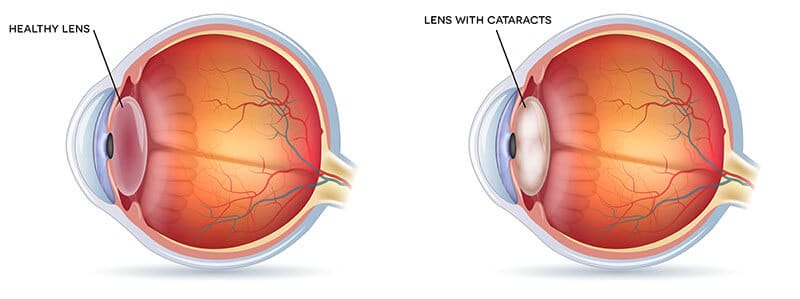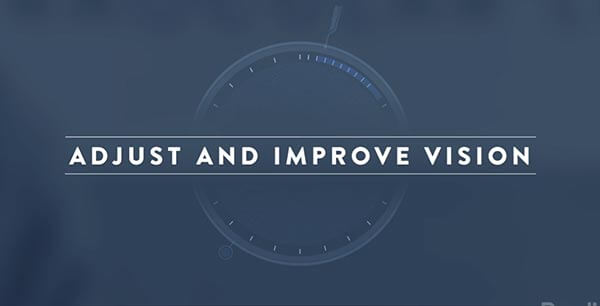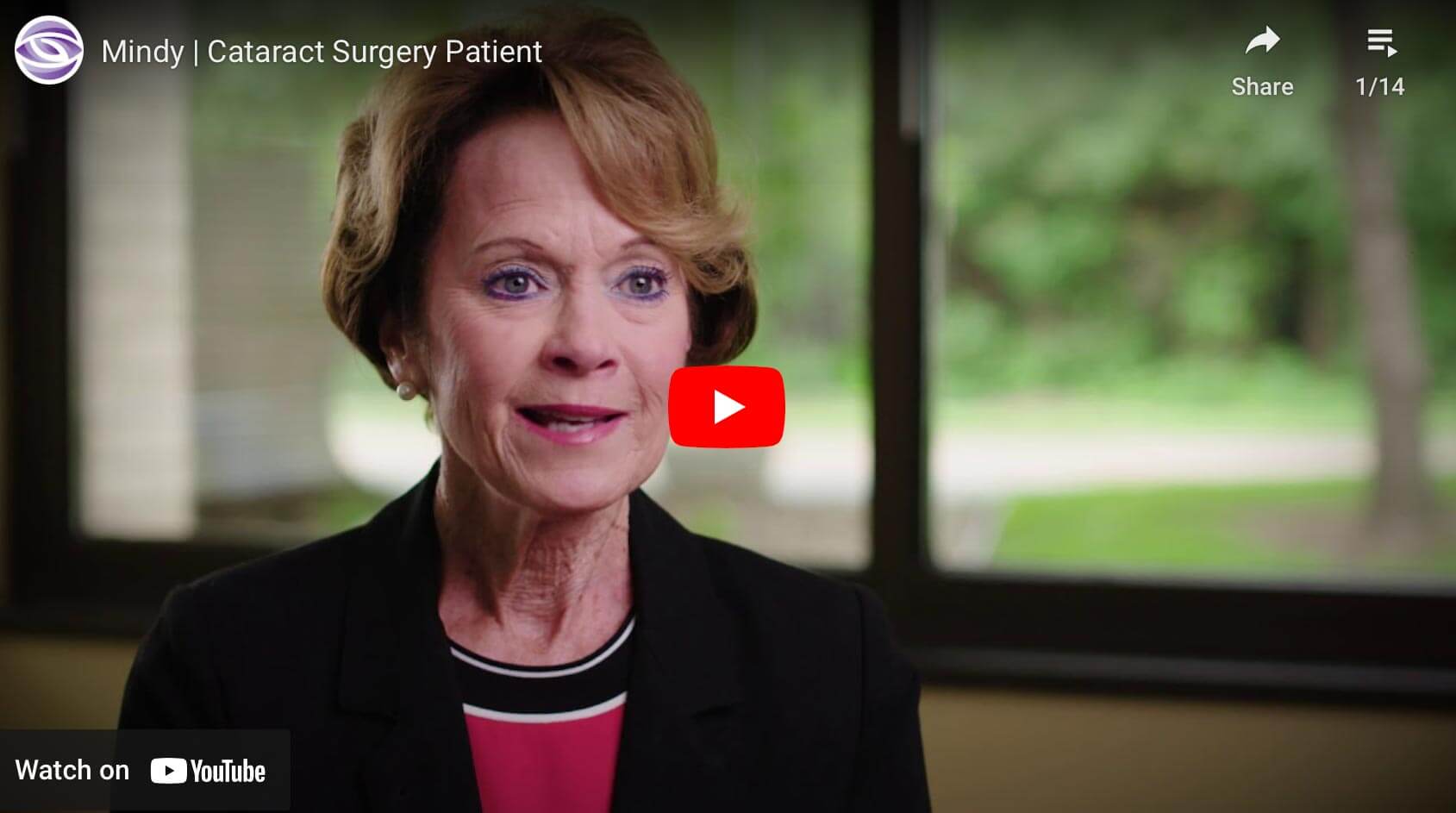Cataracts are caused most commonly by the natural aging process, however metabolic changes, injury, various forms of radiation, toxic chemicals and certain drugs may contribute to the onset as well. As the leading cause of vision loss among adults aged 60 and older, cataracts impair vision, making everyday activities increasingly difficult.
Cataracts are an opacity or clouding of the normally clear lens of the eye, which lies behind the iris and the pupil. This clear lens focuses light onto the retina at the back of the eye, which in turn sends information to the brain where it’s interpreted into the images we see. As the natural lens becomes cloudy, it inhibits or diminishes the passage of light to the retina, often leaving patients feeling as though they are looking through a frosted or “fogged” windshield. Colors may appear dull, and glare and halos around headlights often increase, causing night driving to become more challenging.






If you’re concerned you have cataracts, we recommend scheduling an evaluation with one of our cataract specialists. If cataract surgery is recommended, your surgeon will partner with you to understand your visual goals for after cataract removal. Together you can decide on a lens implant and/or a premium vision package suited for your needs.
To see if you’d be a likely candidate for one of our upgraded lenses or vision packages, you’re welcome to take advantage of our free online screening.

Explore our interactive cataract surgery simulator to compare vision before and after treatment, discover advanced lens options, and see how each choice improves clarity, color, and sharpness—helping you reduce dependence on glasses or contacts.
The first step in determining whether or not you have cataracts is to schedule an evaluation with one of our cataract removal specialists. Due to the amount of testing involved in this comprehensive evaluation, these appointments may take up to two or three hours. Please bring a pair of sunglasses as you may be light-sensitive following dilation.
Our cataract specialists want to learn about your visual goals following the surgery. Do you mind wearing glasses for reading? Would you prefer to be less dependent on glasses altogether? With the removal of the natural lens, we have the opportunity to replace it with a variety of lenses and lens implant powers, offering a wide range of vision outcomes after.
Many patients choose the Standard Monofocal Lens Implant that is billable to insurance. The monofocal lens offers a single power used for optimal vision at either distance or near and glasses will be required following surgery. Some people will choose to further reduce their dependence on glasses after cataract surgery and Minnesota Eye Consultants offers a wide range of Premium Vision options to help achieve this goal.
Vision PackagesThe standard lens package, generally covered by insurance, focuses on addressing the cataract itself. While it can significantly improve your vision, it may not correct pre-existing refractive errors like nearsightedness, farsightedness, or astigmatism. Glasses may still be needed for optimal vision correction after surgery.
The Astigmatism advanced lens package combines the benefits of cataract surgery with advanced technology to correct astigmatism. There are different types of astigmatism correcting options available, such as toric IOLs, which have specific orientations to correct astigmatism.
The astigmatism lens package aims to provide individuals with cataracts and astigmatism the opportunity to achieve improved visual clarity and reduce their dependence on corrective eyewear after cataract surgery.
This package includes:

This advanced lens package includes specialized lenses that are tailored to correct presbyopia and provide clear vision at different distances, such as reading, intermediate, and distance. These lenses often come with advanced technologies like multifocal or progressive designs. This allows the wearer to transition smoothly between different focal points with less dependence on glasses.
The presbyopia specialty lens package aims to provide individuals with a convenient and effective solution for managing presbyopia, allowing them to enjoy clear vision at various distances without compromising their lifestyle or visual comfort.
This package includes:

With a Light Adjustable Lens, patients have the option of choosing to correct their vision at a variety of distances. These lenses can correct nearsightedness (myopia), farsightedness (hyperopia), or both, by optimizing one eye for each. What’s unique is that this is the first lens of its kind, offering adjustments to vision after cataract surgery. The LAL is highly customizable and allows for patients to trial their preferred focal point correction before locking it in.
Generally, patients need between 2 and 5 adjustments before locking in their best vision. UV protective goggles are necessary to wear during all waking hours for up to 6 weeks until we can get the prescription locked in.
This package includes:

Cataract Surgery is a common, outpatient procedure that is typically performed in about 10-15 minutes, with the entire process taking only a few hours. Prior to surgery, patients are often administered anesthesia and medicated eye drops to minimize any discomfort during the operation. This routine procedure begins with your surgeon making a small incision using a tiny instrument (about the size of a pen tip) to access the clouded, natural lens. The natural, cloudy lens is broken up using high-frequency ultrasound and then gently removed by suction. At this point, an intraocular lens implant is placed and the procedure is complete. Thanks to the minimal incision, stitches are normally not required.
For patients interested in laser-based cataract surgery, the process is the same, except a laser creates the incision. Laser cataract surgery carries out-of-pocket expenses for patients. Speak with your surgeon about whether laser-based cataract surgery is right for you.

Minnesota Eye Consultants is proud to offer patients convenient access to eye care across the Twin Cities. We have 5 locations, each with an onsite ambulatory surgery center (ASC).